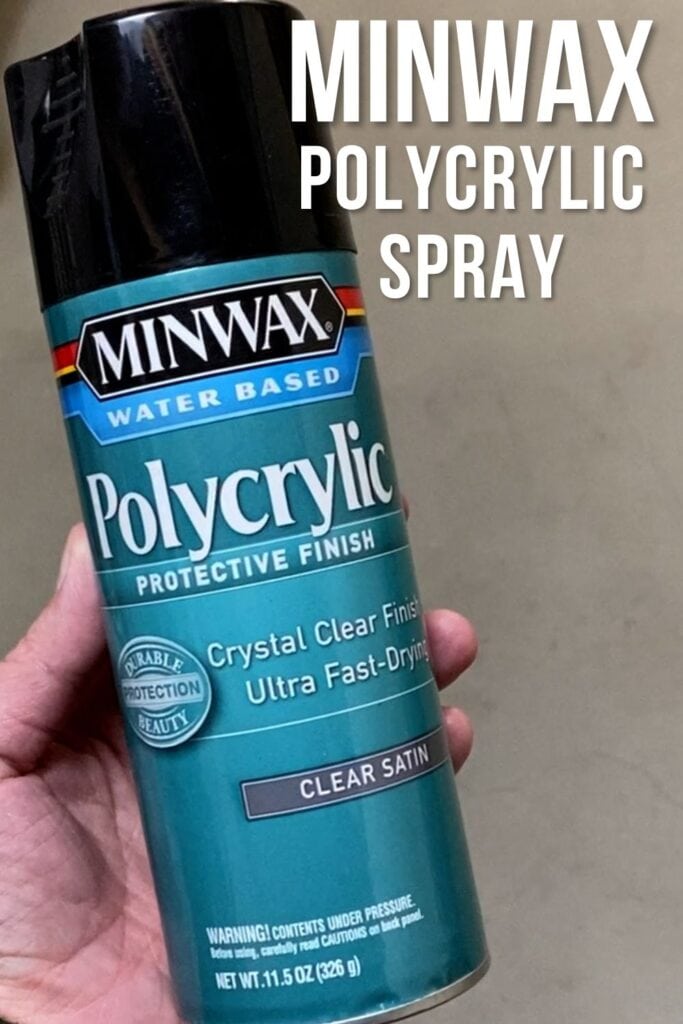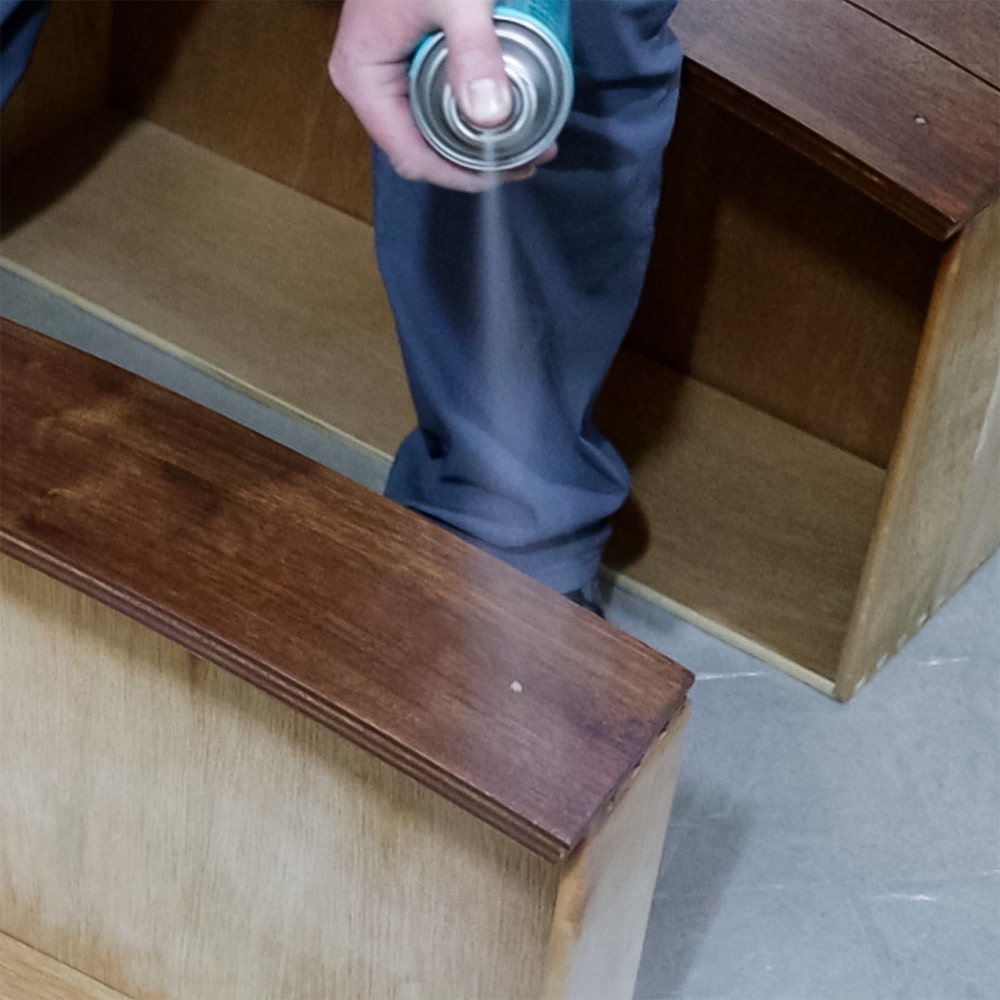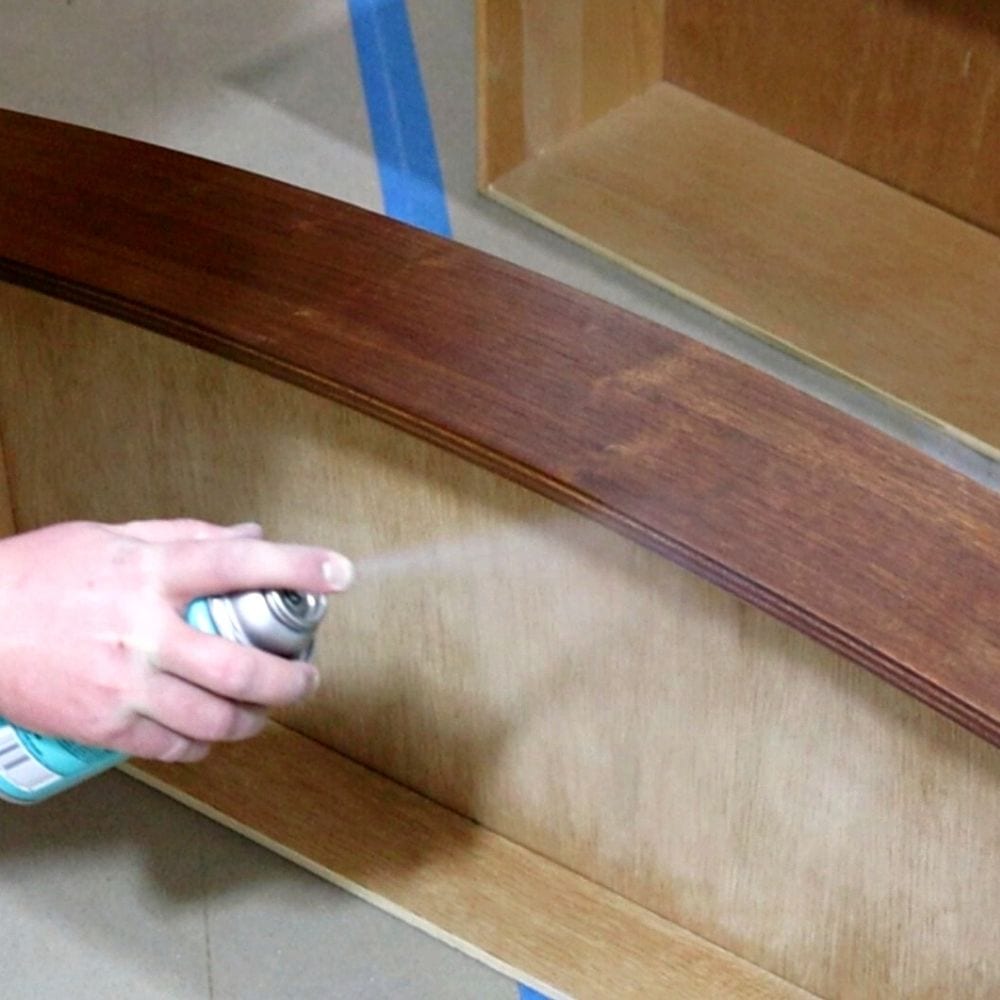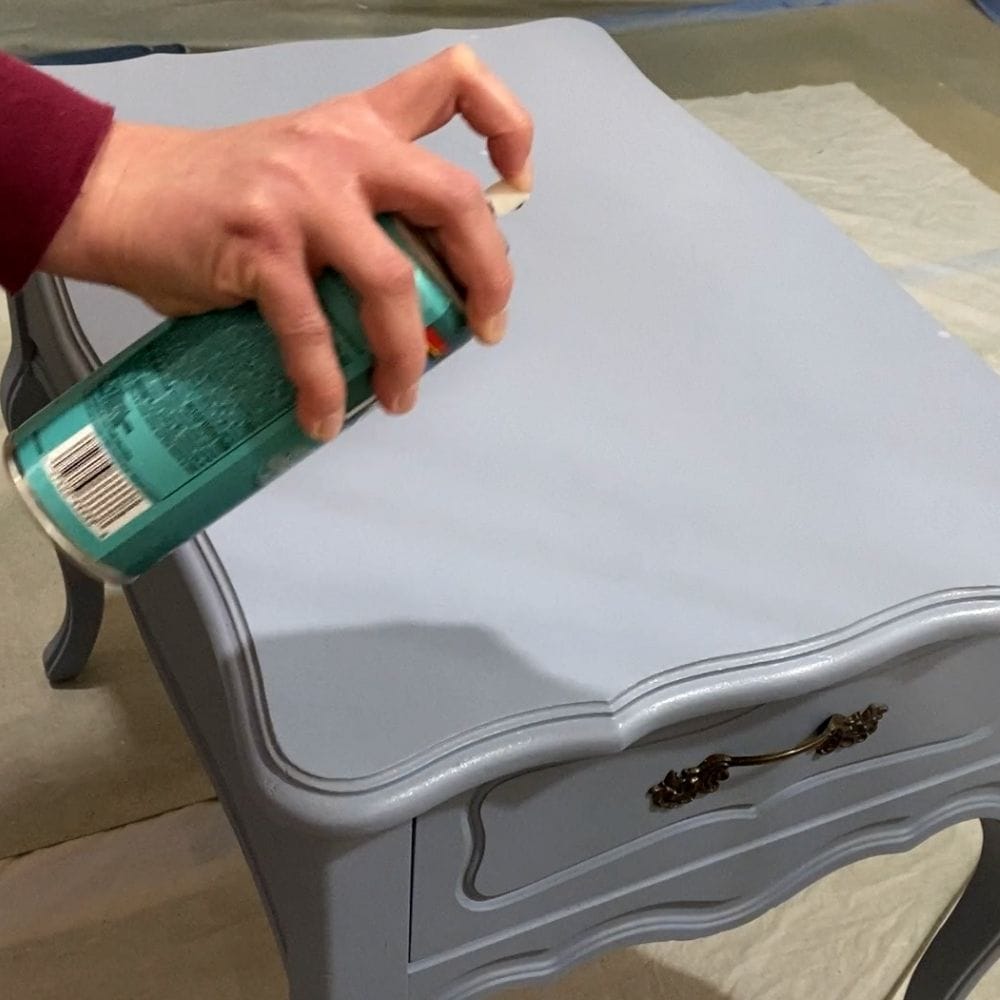Minwax Polycrylic Spray
Welcome to our all-encompassing guide to Minwax Polycrylic Spray – a game-changer and top product in the world of furniture painting tools and supplies. This spray topcoat has changed the way we approach DIY furniture painting, offering both pros and amateurs an effective and easy-to-use solution for topcoating furniture or any small project.
This post is all about giving you the scoop on this amazing product. We’ll dive into its countless benefits, a few important precautions, and see how it stacks up against other players in the market. So whether you’re a seasoned DIYer or just starting your journey, read on – this might just be the secret weapon you’ve been looking for!

The Minwax Polycrylic Spray is like a secret weapon in the DIY furniture painting scene. It’s the go-to solution for a professional finish that’s quick, efficient, and long-lasting.
Whether you’re an experienced furniture painter or just love getting crafty, this product is a favorite. Why? Well, it’s super easy to apply, dries in no time, and creates a perfect professional looking finish.
Today, we’re diving deep into why you absolutely need this in your painting toolkit. Ready? Let’s jump in!
As an Amazon Associate, I earn from qualifying purchases. I also may earn from other qualifying purchases with other companies or get free product to review and use. All opinions are my own.
Pros and Cons of Minwax Polycrylic Spray
When it comes to furniture topcoating, Minwax Polycrylic Spray is a handy product to have. One of its main advantages is its user-friendly nature—it’s simply the easiest method to topcoat your painted furniture to give it a more durable finish.
It dries super fast, which is a game-changer when you are working on multiple projects or are on a tight timeline.
It’s available in different finishes—matte, satin, semi-gloss, or gloss—giving you the freedom to choose based on your specific preferences. Being water-based, it is easy to clean up.
It sprays in a fine mist without causing any splattering, making sure you get a neat finish. Plus, it doesn’t yellow over time, helping your furniture maintain its original look for longer.

However, every rose has its thorn, and Minwax Polycrylic Spray is no exception. It’s a bit pricier than the brush-on version, although many users, like me, find the convenience and outcome well worth the extra cost, especially if you don’t have a paint sprayer.
It’s also crucial to protect surfaces around where you are spraying, as it can create a mess if you don’t. And that can take a few extra minutes. Last but not least, it’s important to use this spray in a well-ventilated area to avoid the buildup of fumes.
Pros
- Easiest way to topcoat painted furniture
- Durable finish
- Dries fast
- Comes in matte, satin, semi-gloss, or gloss finishes
- Waterbased for easy cleanup
- Does not yellow
- Easy to spray
- Sprays in a fine mist without splattering
Cons
- More expensive than the brush on version
- Protect surfaces around where you are spraying to avoid getting this all over
- Use in well ventilated area to avoid fume buildup
Where to buy Minwax Polycrylic Spray
Want to compare prices of the Minwax polycrylic spray? Here are some of the best places to buy it!
- Amazon: Ship to your home!
- Lowes: Pickup in store or ship to your home!
- Walmart: Pickup in-store or ship to your home!
Applying Minwax Polycrylic Spray to Furniture
Applying Minwax Polycrylic Spray to furniture is a piece of cake even for those new to the DIY scene. Just follow the steps below and you’ll be on your way to an impressive, long-lasting finish on your furniture.

Preparation: Start by thoroughly cleaning the furniture piece. Remove any dust or loose particles as these can interfere with the smooth finish. Also, be sure to protect the surrounding surfaces and floor with a drop cloth or plastic sheet to avoid any overspray.
Safety First: Always prioritize your safety. Wear appropriate safety gear including a respirator mask and eye protection. This spray should be used in a well-ventilated area to avoid fume buildup.
Shake it Up: Give the can a good shake for about 2 minutes to make sure the contents are well mixed.
Apply the Spray: Holding the can about 6-12 inches from the surface, apply the spray in thin, even coats. Just move in a sweeping motion across the surface to evenly distribute it.
Dry and Sand: Allow the coat to dry for at least 30 minutes. If you want a smoother finish, lightly sand the surface with 400 grit sandpaper between coats.
Repeat: Apply a total of 3 coats for the best durability, remembering to let each coat dry fully and sand lightly between applications.
Final Dry: After applying the final coat, let the furniture dry for 24 hours for maximum durability. This makes sure the finish has plenty of time to cure and harden, keeping your piece protected for years to come.
And voilà, you’ve successfully added a professional grade finish to your furniture with Minwax Polycrylic Spray!
Can you use minwax polycrylic over paint?
Definitely! You can use Minwax Polycrylic over paint. That’s why it’s a favorite among DIY furniture painters. Whether you’ve got a bold color or a subtle hue, Minwax Polycrylic goes on clear, keeping your paint’s vibrancy intact. It seals and protects without messing up the look of your piece.

Plus, it dries fast, so no need to wait forever for the final result. Check out this blog post about painting with General Finishes Milk Paint, where we used Minwax Polycrylic Spray on a painted end table.
Just remember, avoid using it over alkyd or enamel paints as it is not compatible with these types of paints.
Minwax Polycrylic VS Polyurethane
When it comes to the debate of Minwax Polycrylic vs Polyurethane, both have their unique strengths.
Polycrylic is a water-based topcoat known for its clear finish and fast drying time, making it a favorite among DIYers. It’s perfect for projects where maintaining the original color is crucial, thanks to its non-yellowing nature.
On the other hand, Polyurethane, an oil-based topcoat, is known for its durability and strength, making it great for high-traffic surfaces. However, it has a yellow tint and takes longer to dry. Learn more about the pros and cons of Minwax polyurethane in our Minwax polyurethane spray post.
It’s important to note that while both products are easy to spray, your choice ultimately depends on your project’s specific needs and your desired outcome. Learn more about the difference between both topcoats in our polycrylic vs polyurethane post.
Minwax Polycrylic VS Varathane Water Based Polyurethane
When comparing Minwax Polycrylic and Varathane Water Based Polyurethane, both have their unique pros and cons. As far as the spray version is concerned, I prefer the Minwax polycrylic spray better.
I have struggled with the spray of the Varathane Water Based Polyurethane spray can spitting and splattering, but I have never had issues with the Minwax spray cans.
Check out the best spray polyurethane here to learn more.
When it comes to brushing on these topcoats, or using them in a paint sprayer to spray polyurethane, I prefer Varathane waterbased polyurethane, but they work very similarly.
Here’s our blog post about the spray polyurethane vs brush on polyurethane to learn more about the difference between these two methods.
Either way, here is how to apply polycrylic to furniture by hand if you choose to not use the spray can version, or use a paint sprayer.
more furniture topcoat tips
- Topcoats for Painting Furniture
- Best Polyurethane for Furniture
- Wax VS Polyurethane
- Best Clear Polyurethane Spray For Wood
Follow us on YouTube to get more tips for painting furniture.
Or share your project with us on our Facebook Group and be part of our community. See you there!
